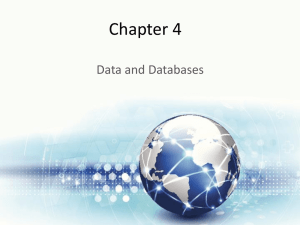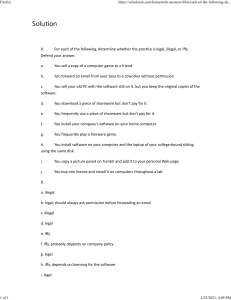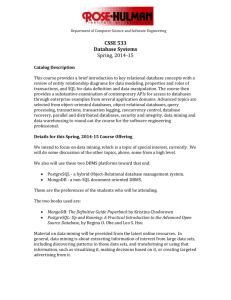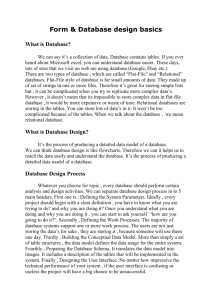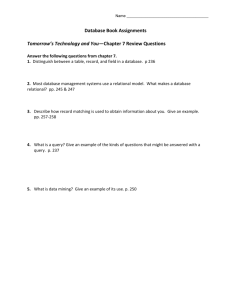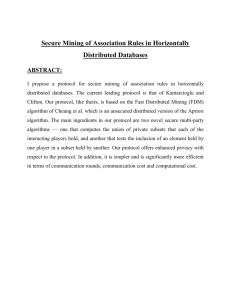File - Ghulam Hassan
advertisement
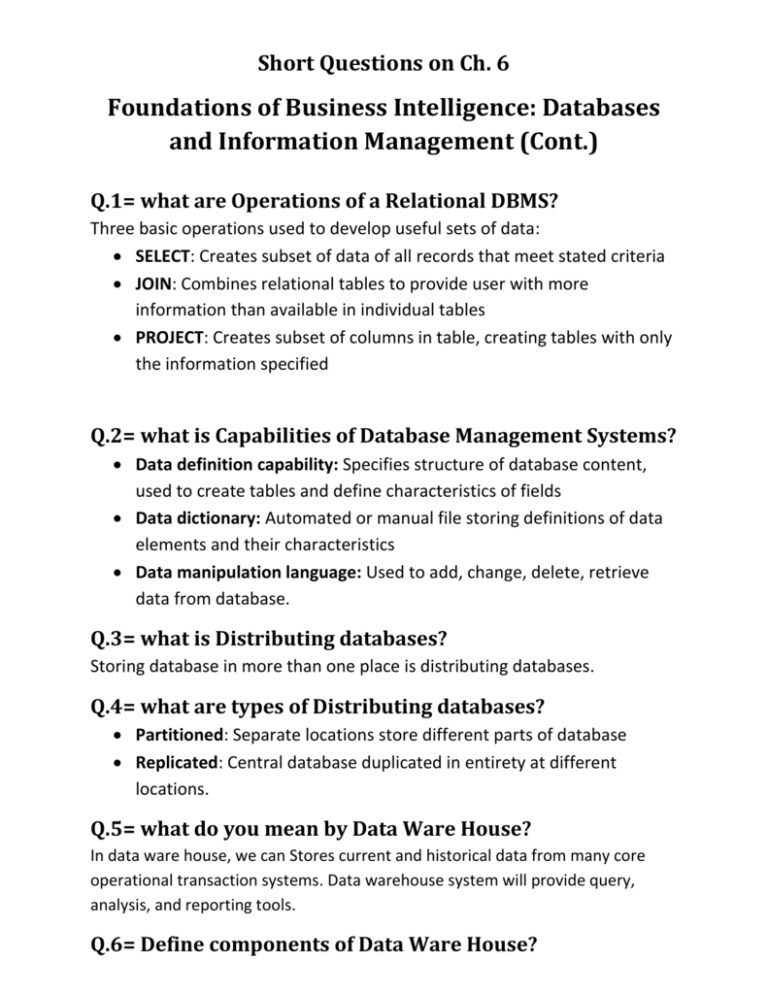
Short Questions on Ch. 6 Foundations of Business Intelligence: Databases and Information Management (Cont.) Q.1= what are Operations of a Relational DBMS? Three basic operations used to develop useful sets of data: SELECT: Creates subset of data of all records that meet stated criteria JOIN: Combines relational tables to provide user with more information than available in individual tables PROJECT: Creates subset of columns in table, creating tables with only the information specified Q.2= what is Capabilities of Database Management Systems? Data definition capability: Specifies structure of database content, used to create tables and define characteristics of fields Data dictionary: Automated or manual file storing definitions of data elements and their characteristics Data manipulation language: Used to add, change, delete, retrieve data from database. Q.3= what is Distributing databases? Storing database in more than one place is distributing databases. Q.4= what are types of Distributing databases? Partitioned: Separate locations store different parts of database Replicated: Central database duplicated in entirety at different locations. Q.5= what do you mean by Data Ware House? In data ware house, we can Stores current and historical data from many core operational transaction systems. Data warehouse system will provide query, analysis, and reporting tools. Q.6= Define components of Data Ware House? There are two components of data ware house: Internal Source: we can view operational, customer, manufacturing data from internal sources. External Source: we can view external data like other companies financial reports from external sources. Q.7= what do you mean by Data Marts? A small data warehouse containing only a portion of the organization’s data for a specified function or population of users Q.8= what do you mean by Business Intelligence? Identification of trends and phenomena from your data Example based on your sales figures of last five years you will decide how much quantity you will sell in next year. OR Applications and technologies to help users make better business decisions Q.9= what do you mean by Online analytical processing (OLAP)? Through OLAP, we can ask specific questions about our products and services. Q.10= what do you mean by Data mining? Analysis of large pools of data to find patterns and rules that can be used to guide decision making and predict future behavior is called data mining. Q.11= what do you mean by Predictive analysis? Use of data mining techniques, historical data, and assumptions about future conditions to predict outcomes of events is called Predictive analysis. Q.12= what do you mean by Data administration? A special organizational function for managing the organization’s data resources that is concerned with information policy, data planning, maintenance of data dictionaries, and data quality standards. Q.13= what do you mean by Data quality audit? Structured survey of the accuracy and level of completeness of the data in an information system is called data quality audit. Q.14= what do you mean by Data cleansing? Activities for detecting and correcting data in a database or file that is incorrect, incomplete, improperly formatted, or redundant. Also known as data scrubbing Q.15= what do you mean by Information policy? Formal rules governing the maintenance, distribution, and use of information in an organization
